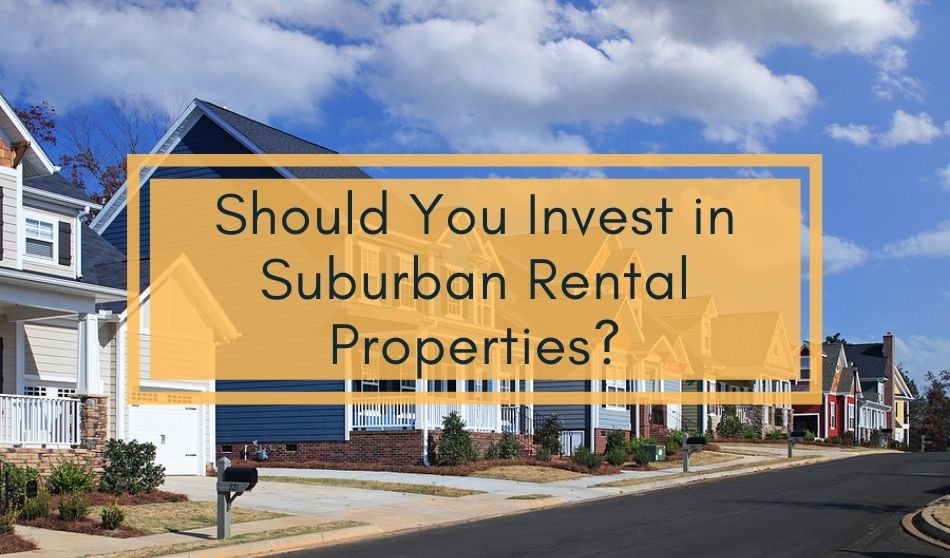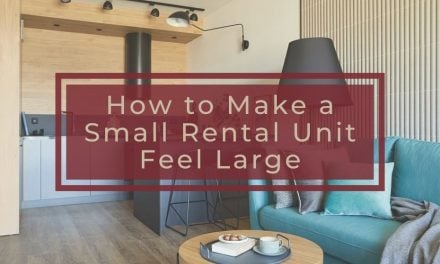Investors considering residential rental properties typically look toward cities or other urban areas for obvious reasons: Inventory is plentiful and varied, the renter pool is large, and cities abound with amenities, transportation, and work options.
But what about the suburbs? For some investors, suburban properties are the right choice for their investment goals.
Suburban Living is on the Rise
COVID-19 has changed the landscape for the foreseeable future when it comes to the real estate investment market. For many families, work-from-home for parents is here to stay along with hybrid learn-from-home arrangements for school-aged kids. Families (millennials in particular) are looking for more living space, more green space, and more bang for their buck and are taking the opportunity to move from urban centers in search of a safer, more suburban lifestyle.
Evidence suggests that the trend of buyers or renters moving from urban centers into the suburbs isn’t likely to reverse itself anytime soon. Single-family homes now account for 39% of the 47 million rental units in the U.S.
Advantages of Investing in the Suburbs
Consider the following advantages of investing in a suburban rental market:
Long-term tenants mean fewer vacancies
Renters looking to settle in the suburbs tend to be families who view the suburbs as a permanent move. They’re often interested in a long-term lease of at least a year or more, especially if the area has great schools for their kids.
Other suburban renters, unfortunately, are couples navigating divorce, which may or may not involve the sale of a family home. For a divorcing couple with children already rooted in a community, it sometimes makes sense for one spouse to establish their own household nearby, which often translates to a long-term rental.
More for your money
Suburban homes are typically 300 square feet larger and $0.18 per square foot cheaper than urban properties, meaning you’re able to purchase a larger suburban property for the same price as a smaller city home.
Families are finding they can often get more than twice the square footage when they rent a home in the suburbs than they would in the city, and suburban properties usually come with outdoor space and other amenities such as a garage. Renters see value in getting more for their money in the suburbs and are willing to pay higher rent for the additional benefits the larger home and the surrounding area have to offer.
Suburbanites who live within an hour of an urban center often feel they get the best of both worlds: peace and quiet, lower crime rates, and green space in the suburbs plus easy access to the arts, culture, and entertainment of a nearby city.
Your investment is in good hands
Long-term renters are more likely to view the property as their home rather than a temporary residence. There tends to be less wear and tear on a property with long-term renters and a more vested interest in keeping the property in good repair. Suburban renters are also more likely to form relationships with their neighbors and community, rooting them further to the area for the long term.
Income from long-term renters tends to be consistent, as suburban renters often include multiple income earners, creating a larger budget and more stable finances than a single renter. It’s always a good idea to fully screen all potential renters, and families looking for a long-term lease are typically on solid financial ground.
Evaluating the Suburb
Detailed research is key to determining a neighborhood’s viability for a profitable investment. The neighborhood will determine what types of rental properties and renters are available to you. Is the neighborhood composed mainly of single-family homes, or are condos, multi-family units, or apartment buildings on the market also? Will you be renting to college kids, senior citizens, or young families?
You’ll want to vet the area for livability, amenities, and a host of other factors before you determine if a particular property is the right investment for you.
Begin by checking the neighborhood’s vacancy rates, the percentage of all available rental units that are vacant at a given time. High vacancy rates might be a red flag that the area has other issues such as declining neighborhoods or high turnover, or it could just be part of a seasonal cycle. But be aware that a high number of available listings paired with high vacancy rates equates to lower rents as landlords try to attract renters.
Check the average rent in the area for comparable properties to ensure that what you’re able to charge will cover your mortgage, taxes, insurance, and maintenance.
Assess the property taxes and the property tax history. High property taxes are not necessarily a reason to discount an area as a good choice for an investment property, especially if it’s a highly desirable and sought-after neighborhood with long-term residents.
Finally, consider the quality of the area schools, which can ultimately affect the value of your property. Research crime rates as well as amenities such as parks, libraries, shopping, restaurants, and transportation options.
Choosing the Right Property
It used to be that investors steered clear of single-family homes, as many felt they were difficult to manage, but a good real estate management program or a property management team can help solve those problems.
And though single-family homes might dominate your chosen suburban market, it’s also wise to consider condominiums, apartment buildings, or multi-family homes to expand your options. Condos are a low-maintenance investment, as the condo association usually takes care of maintenance and repair, while multi-family homes or apartment buildings might require a management company.
If inventory is tight in your ideal area, you might consider investing in a property that needs a bit of TLC or other simple renovations to bring it up to date. A small investment upfront, whether using your own money or a personal loan, could attract better potential tenants and secure a return on your investment.
Consider the benefits of executing a 1031 exchange if you’re planning to sell an existing rental property to purchase a new one, as you may be able to defer capital gains taxes.
The market trend of migration from cities into the suburbs around the U.S. appears to continue well past 2021. Investment in suburban rental properties looks to be a smart move.






